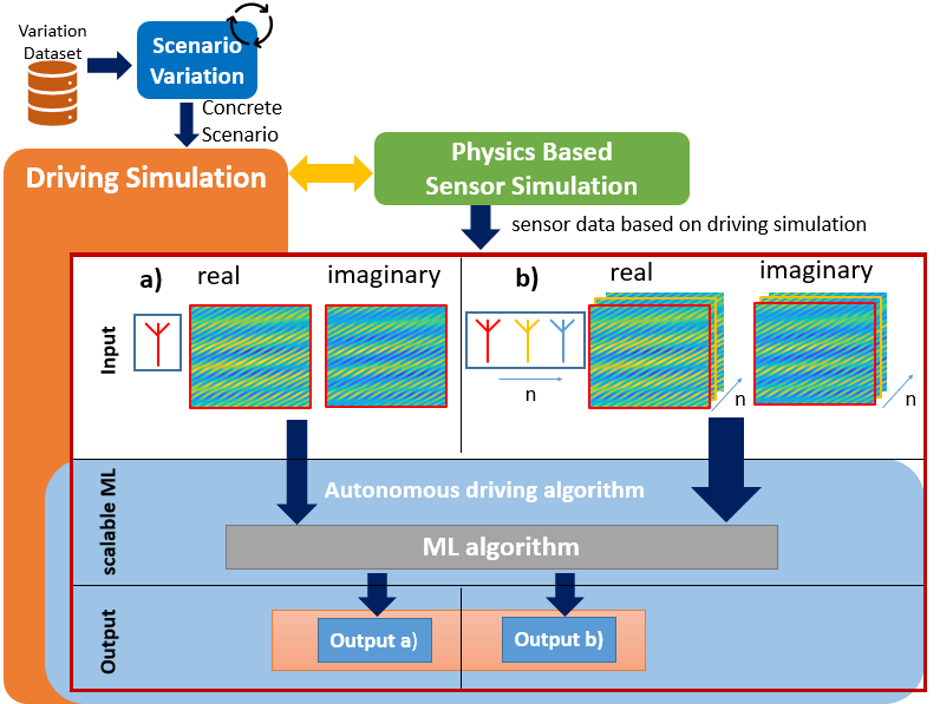The use of synthetic data with different radar antenna configurations for ML-Tasks
The way towards a comprehensive data solution for AI training and validation, that is envisioned by the project KI Data Tooling, also contains the use of synthetic radar data. In this context, a new publication investigates the different radar antenna configurations and a simulation toolchain to generate raw radar imaginary and quadrature channel data.
One important topic that KI Data Tooling is dealing with is the use of synthetic simulation data to improve the costs and efficiency of data sets. In this context the new publication “Automotive Radar Antenna Configurations and their Impact on Machine Learning Approaches: A Case Study” focused on synthetic radar data, that was process in a so called radar data cube. Three research questions were posed in the paper:
- How can a simulation toolchain be depicted to generate raw imaginary and quadrature (I/Q) channel data?
- Can machine learning algorithms be trained with different antenna configurations?
- Do the number of radar channels influence the training and testing of ML algorithms?
First of all, a toolchain containing a scenario variation and a sensor simulation was established. With the help of the scenario variation it was possible to create various datasets. The Ansys Real Time Radar Simulation that was used for this paper uses the shooting and bouncing ray approach. Furthermore, two different machine learning approaches were investigated for this research: the variational autoencoder (VAE) and a Recurrent Neural Network (RNN).
The results with this approaches showed, that both can handle different radar cubes, but a VAE is not easily scalable, whereas a RNN is. In addition to that, a VAE represents all different kinds of cubes nearly the same way and therefore changing the antenna does not have a huge impact. In contrast, the a RNN, trained on a specific tasks (in this case distance prediction was investigated), shows a higher accuracy with increasing numbers of antennas.
In the next steps, those results will now be compared with real data. Furthermore, this behaviour will be analysed using more complex scenarios and machine learning approaches.
From a KI Data Tooling point of view, the understanding of different influences from the sensor characteristics on ML-approaches has the possibility to improve sensor models for specific tasks in a simulative way.
Image: KI Data Tooling
